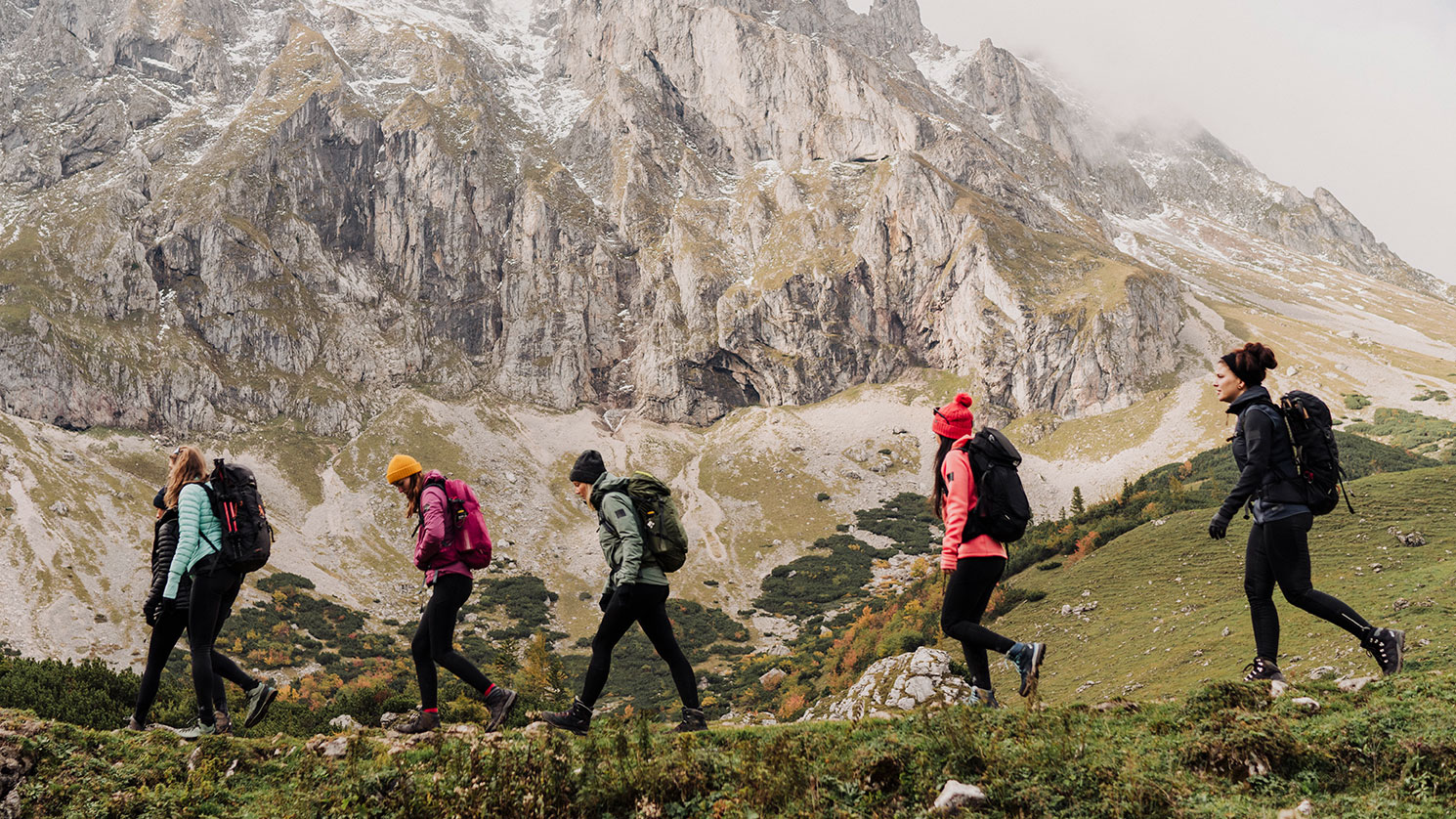7 big mistakes people make with their hiking kit
These are the common errors you're probably making with your outdoors packing, according to an expert


Getting your hiking packing list perfect is key to a comfortable and faff-free expedition. But there are plenty of traps you can easily fall into when packing for a walking trip – whether you're a beginner or even a more experienced outdoorsperson.
T3 enlisted the help of seasoned hiker Marie Cheng to hear her thoughts on the common errors people make, and how to avoid them. As a DofE Supervisor, Trainee Mountain Leader, runner, skier and general mountain enthusiast (pictured above in the red bobble hat on the Jack Wolfskin Wolftrail expedition – Marie has plenty of wisdom to impart. Here's what she had to say.
1. Putting everything loose in your backpack
Separating your hiking backpack's contents into separate dry bags will not only keep your kit dry if the heavens decide to open, but also help save space, as they'll compress clothing down into smaller packages. On longer trips, this approach is also a major win on the organisation front.
"I have a dry bag just for socks and underwear, a dry bag for my gloves and beanies, a dry bag for my base layers," says Marie. "It also means that when you’re having to unpack and repack on a daily basis, like on some of the expeditions I’ve been on to Morocco and Tanzania, it’s a lot more organised in your tent!"
2. Overpacking
You're carrying everything on your back, so, especially on longer trips, you really don't want to be lugging things around that you won't be using. To make sure you've slimmed everything down as much as humanely possible, Marie suggests packing your bag twice. "Take everything out after you’ve packed once, and really question if you do need everything in there," she explains. "Sometimes the answer is yes, but often I see a lot of people overpack. And when you’re carrying your own stuff wild camping, every gram counts!"
3. … or underpacking
That said, don't overdo it. "Depending on the terrain and nature of the hike, I was always advised to pack enough in your bag to make sure that if for any reason you or someone else got into trouble, there is enough in there to keep you warm till help arrives," adds Marie.
4. Not fitting your backpack properly
"A good fitting backpack can make and break your trip!" says Marie. All the best hiking backpacks have both waist and chest straps that can be used to distribute the load properly.
Get all the latest news, reviews, deals and buying guides on gorgeous tech, home and active products from the T3 experts
"Usually I start with everything loose and then tighten the straps accordingly so the pack is sitting right," says Marie. Our guide to how to fit a hiking backpack has a step-by-step process to follow.
5. Going for chunky layers
Everyone knows that when heading into the great outdoors, you should adopt a layering approach, but don't be tempted to pack that snuggly looking jumper. "Over the years, I’ve worked out that having more layers that you can take off and put on, rather than one massive big thick layer is much more effective," says Marie. This approach also means you can easily adjust your outfit to make it comfortable for any weather / level of effort.
6. Forgetting a power bank
While you might be planning on switching off and connecting with nature on your trip, you probably won't be going /entirely/ tech-free. Things like hiking GPS systems need juice, as do camping lanterns, and you'll want a phone with you in case of emergencies. Long story short, bring a power bank for peace of mind. This one doubles as a hand warmer, if you're feeling extravagant.
7. Choosing a cotton base layer
While Marie says that base layers are one of the areas where you can get away with going cheaper or more basic, if you're on a budget (for example, using existing gym gear rather than buying a new hiking-specific option), there are still a few key rules to follow. "Make sure they aren’t cotton and wick away your sweat," she explains. "The idea being that you want the moisture to escape so that you are dry if for example you sweat going up a hill then cool down when you reach the top."

Ruth was T3's Outdoors and Wellness Editor from 2020 to 2022, covering hiking, camping and adventure sports kit, as well as mattresses, sleep accessories, yoga and general wellness. She's now a Homes Editor at sister site TechRadar, where she deals in all things air (vacuum cleaners, robovacs, fans and air purifiers), and hair (hair dryers, straighteners and stylers).